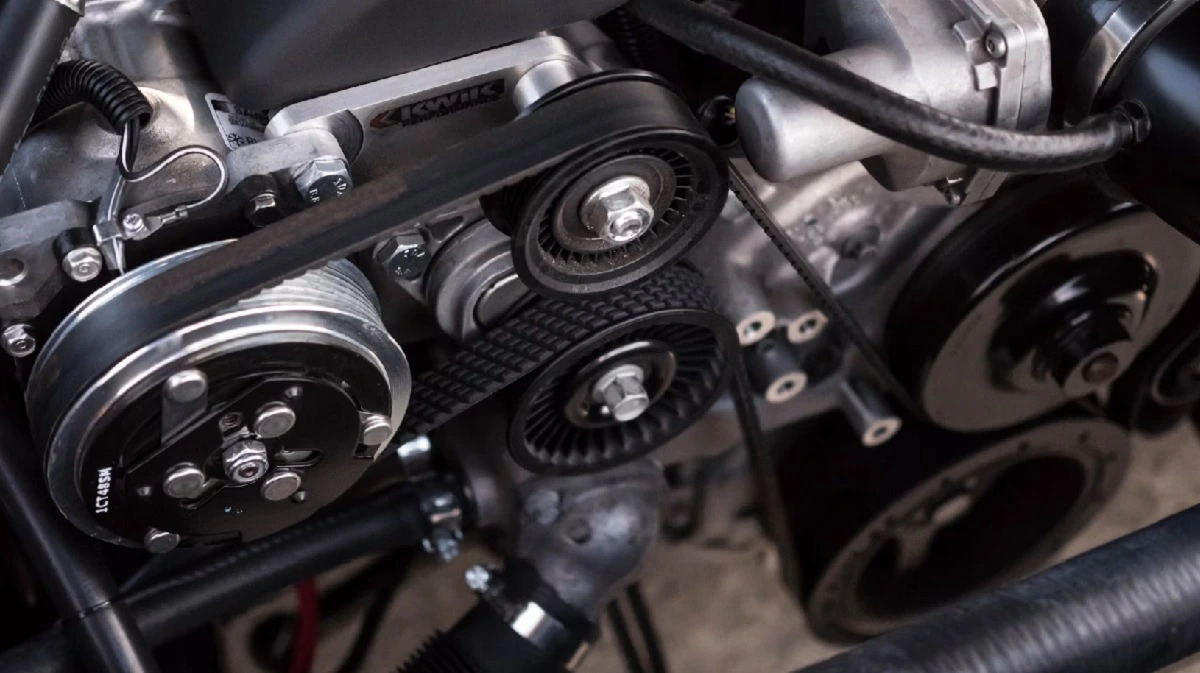Electric cars in Thailand floods: Should you continue driving

Thailand’s monsoon season brings not only heavy rains but also the inevitable floods that can disrupt daily life. If you’re an electric car owner, you might be wondering whether it’s safe to continue driving through these deluges. With electric vehicles (EVs) becoming more popular, understanding their performance and safety in flood conditions is crucial.
Electric cars are designed with advanced technology, but how do they fare when the roads turn into rivers? Concerns about battery safety, water ingress, and overall vehicle reliability are common among EV drivers facing flood-prone areas.
In this article, we’ll explore the realities of driving an electric car during Thailand’s flood season. You’ll discover practical tips, safety precautions, and insights into the resilience of modern EVs. So, should you keep driving your electric car when the waters rise?
Overview of the rise of electric vehicles in Thailand
Electric vehicles have seen a significant surge in popularity in Thailand over recent years. In 2023 alone, electric vehicle sales reached approximately 68,000 units, marking a staggering year-on-year growth of 405%. This growth reflects a growing awareness of environmental issues and a shift towards sustainable transportation solutions.
Key statistics on EV Adoption
| Year | Total EV Sales | Market Share (%) |
|---|---|---|
| 2022 | 14,000 | 1% |
| 2023 | 68,000 | 8.6% |
| 2024 (Projected) | 85,000 – 100,000 | 10-12% |
- Government Incentives: The Thai government has implemented various incentives to promote EV adoption, including tax breaks and subsidies.
- Infrastructure Development: The establishment of charging stations is crucial for supporting the growing number of electric vehicles on the road.
Understanding electric cars and floods

Electric cars, or EVs, use sealed battery packs that are generally water-resistant. Manufacturers design these vehicles with safeguards against water ingress to prevent electrical malfunctions. For example, Tesla and Nissan ensure their battery packs meet rigorous safety standards, minimising the risk of water-related issues.
In Thailand, where heavy rains and floods are common, understanding the specificities of electric cars’ performance in waterlogged conditions is crucial. Modern EVs feature elevated battery placements and sealed connectors, which can help them withstand splashes and shallow water. However, submerging an electric car, particularly in deeper water, poses risks to the vehicle’s electronic systems.
Driving electric cars during floods in 2024 remains largely a matter of preparation and caution. Always refer to your vehicle’s manual for guidance on water exposure limits. Brands like Tesla provide detailed instructions on what to do if your car encounters flooded areas. Knowing these guidelines enhances safety for both the driver and the vehicle.
Challenges and safety concerns

While electric vehicles offer numerous advantages, they also come with unique challenges during extreme weather events like floods. Here are some key considerations:
Safety concerns
- Electrical Hazards: Water can create a risk of short-circuiting electrical systems within the vehicle.
- Battery Damage: Floodwaters can damage the battery pack and other critical components.
- Loss of Control: Driving through flooded areas can lead to loss of traction and control, regardless of the vehicle type.
Potential damages
- Water Ingress: Water can enter through seals and gaskets, leading to corrosion and damage to electrical systems.
- Battery Compromise: If water penetrates the battery casing, it may lead to battery failure or even fires.
- Increased Repair Costs: Repairs for water-damaged vehicles can be extensive and costly.
Recommendations for EV Owners
When faced with flooding conditions, EV owners should consider the following recommendations:
- Avoid Driving Through Over Flooded Areas: If possible, do not attempt to drive through water that is deeper than the vehicle’s lowest point.
- Monitor Weather Reports: Stay informed about weather conditions and potential flooding in your area.
- Know Your Vehicle’s Limitations: Understand the manufacturer’s guidelines regarding water exposure for your specific electric vehicle model.
- Emergency Preparedness: Keep an emergency kit in your vehicle that includes essential items such as a flashlight, first aid kit, and non-perishable food.
Ultimately, driving an electric car in flood conditions requires awareness and preparation. Staying informed about your vehicle’s capabilities and following manufacturer guidelines ensures safer journeys during Thailand’s monsoon season. Always prioritise safety and consult professional services if you are unsure about any aspect of driving an EV in flood conditions.
Tips for driving electric cars in flooded conditions

Driving electric cars in flooded conditions requires caution. Follow these tips to navigate safely in Thailand’s monsoon season.
1. Go slowly
Reduce your speed. Driving slowly minimises water splashing onto sensitive components. Slower speeds also improve control and allow for a smoother drive through waterlogged areas.
2. Maintain a safe distance from other vehicles
Leave more space between cars. This reduces the risk of collisions, especially if other drivers stop abruptly. Keeping a safe distance also prevents water from being pushed towards your vehicle.
3. Avoid high water levels
Do not drive through water higher than the bottom of your car’s battery pack. Electric cars often have elevated battery placements but exceeding design limits can cause serious damage. If unsure, find alternative routes.
4. Manage air conditioning and electrical systems
Turn off air conditioning and unnecessary electrical systems when driving through flooded streets. This reduces electrical load and minimises strain on the vehicle’s
Maintenance procedure after flood exposure

1. Inspect the battery pack for any signs of damage
After flood exposure, inspect the battery pack for any signs of damage. Look for visible cracks, corrosion, or water ingress around the battery housing. If any evidence of damage is found, consult a certified EV technician immediately.
2. Check electrical components and connections
Examine the electrical components and connections to ensure they are dry. The water inside these areas may cause electrical shorts or corrosion. Pay attention to connectors, wires, and fuses. If moisture is detected, dry these areas thoroughly and seek professional advice.
3. Dry out the interior and carpets
Remove any moisture from the car’s interior, including carpets and seats. Use a wet/dry vacuum to extract water, and consider using dehumidifiers or fans to expedite drying. Mould and mildew can develop if the interior is not properly dried, affecting air quality and comfort.
4. Test the charging system
Before using the charging system, test it to ensure it has not been compromised by water exposure. Inspect the charging port and associated cables for water damage. Plug into a known functional charging station and monitor for any irregularities. Any issues should be checked by a professional.
5. Monitor performance and range
After addressing any visible issues, monitor your car’s performance and range. Any sudden drops in range or irregular performance could indicate hidden damage from flood exposure. Keep an eye on dashboard indicators and report unusual behaviour to a service centre.
6. Regular service checks
Schedule regular service checks for your electric car, especially after flood exposure. Frequent maintenance can help detect and address flood-induced issues early. This proactive approach will ensure your vehicle remains safe and functional in 2024’s unpredictable weather.
7. Consult the manufacturer’s guidelines
Always refer to your vehicle manufacturer’s guidelines for specific maintenance steps after flood exposure. Manufacturers like Tesla and Nissan offer detailed recommendations that can be crucial for maintaining your electric car’s health in flood-prone regions like Thailand.
Insurance for electric cars in flood-prone areas

Securing insurance for electric cars in Thailand, especially in 2024 during flood-prone months, is essential. Most insurance providers offer coverage for natural calamities, including floods. It’s important to verify the specifics of your policy. Understand what’s covered and what exclusions apply.
- Comprehensive Coverage: Choose a plan that includes flood damage. This covers electrical systems, battery packs, and interiors affected by water ingress.
- Claim Process: Familiarise yourself with the claims process in the event of flood damage. Document the condition of the vehicle with photos. Report damages promptly to speed up claim approval.
- Premiums and Costs: While premiums might be higher in flood-prone areas, investing in comprehensive coverage ensures financial protection. Compare different providers to get the best rates without compromising on coverage.
- Policy Clauses: Read the fine print. Some policies might exclude certain types of water damage or have conditions about driving in known flooded areas. Understanding these can prevent future disputes.
- Additional Riders: Consider additional riders for enhanced protection. Coverage for towing services or compensation for alternative transportation can be valuable if your electric car is severely damaged.
- Emergency Assistance: Ensure your policy includes emergency assistance. During floods, quick access to professional help can save significant repair costs and time.
Some emergency procedures
In case your vehicle becomes submerged or experiences electrical issues due to flooding:
- Evacuate Immediately: Prioritize your safety and exit the vehicle as soon as possible.
- Call for Help: Use your mobile phone to contact emergency services or roadside assistance if needed.
- Document Damage: Take photos of any damage for insurance claims once it is safe to do so.
Proper insurance preparation gives peace of mind. In flood-prone areas like Thailand, it provides essential protection for your electric car against unforeseen water damage.
By staying informed and prepared, you can navigate the challenges of driving electric cars in Thailand’s monsoon season more safely.
Other useful resources about automotive in Thailand
- Buying a car in Thailand
- Selling car in Thailand
- Custom cars in Thailand
- Luxury cars in Thailand
- Automotive Laws and Regulations in Thailand
- Motorbike rules Thailand
- Motorcycle Rules in Bangkok
- Buying a motorcycle in Thailand
- Selling a motorcycle in Thailand
Latest Thailand News
Follow The Thaiger on Google News:


























